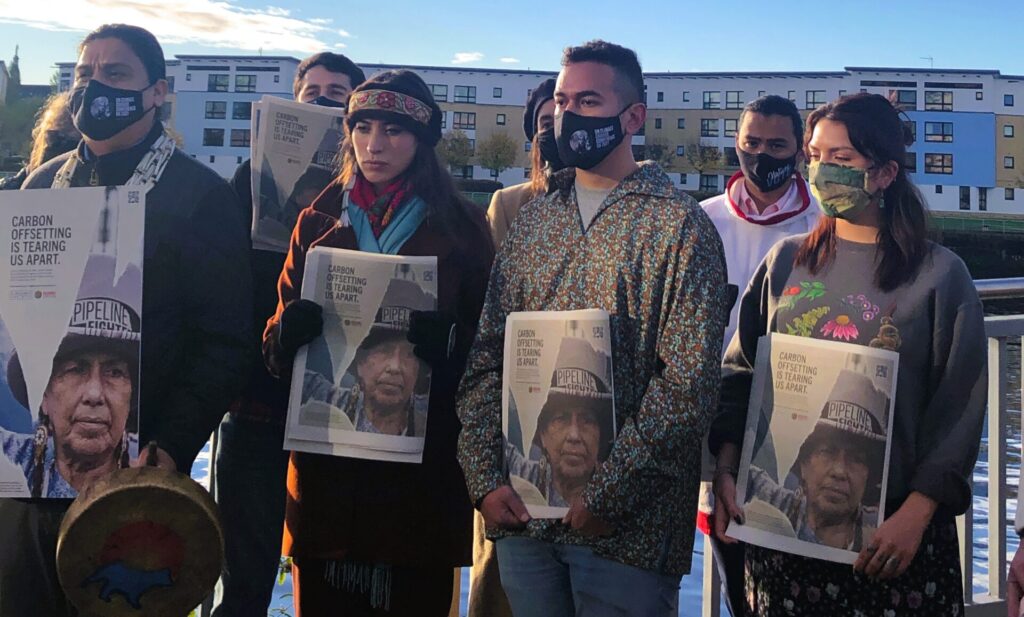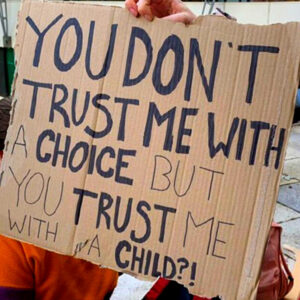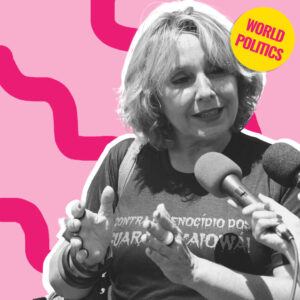Łchav’aya K’isen is an indigenous Dena’ina woman from Bristol Bay, Alaska (United States). Known as Ruth Miller outside of her Curyung tribe community, a conviction for climate justice runs deep in her culture.
Ruth Miller has spent her life campaigning as the Climate Justice director for Native Movement, an organisation fighting for indigenous rights. The Movement began with indigenous, black, Asian, pacific-islander, and migrant communities. It champions leadership from the people most affected by climate change.
The organisation fights against short-term solutions focused solely upon carbon reduction which ignore the underlying causes of climate change. Instead, it calls for real solutions that tackle both ecological and social problems which are specific, place-based, and informed by indigenous knowledge.
“I do not identify as an environmentalist,” declared Łchav’aya K’isen, speaking in the 26th United Nations Climate Conference (COP26) negotiations in Glasgow in November 2021. After delivering a moving speech condemning false climate solutions, she would certainly align with most people’s perception of an environmental activist.
“It is in my blood. It is in my life ways, my culture, and in my language to advocate for the safety, the health, and the wealth of our lands and waters. Everyone should be an activist, but tightly defining this activism into different categories can narrow the things people care about, creating a broader apathy as the norm,” Ruth says.

Ancestral homelands’ degradation
On that bright November morning, Ruth stood in solidarity with other representatives of indigenous communities on the banks of the River Clyde. Just outside of the entrance to the COP26 negotiating halls, they took turns speaking to the growing crowd. Each person held a newspaper displaying the slogan “carbon offsetting is tearing us apart”.
Carbon offsetting is a strategy to help people at all scales balance out their carbon footprints. On an individual level, carbon offsetting would look like a tree-planting initiative to compensate for a flight you took abroad.
On an international scale, carbon offsetting occurs through a global carbon market. Each country has its carbon allowance. If it emits too much, it can purchase some carbon credits from a country that is not on track to use its entire allowance. To many in the Global North, carbon offsetting is a viable and appealing option.
This is not a view that many indigenous communities around the world share.
During Ruth’s speech, the audience received copies of the book ‘Hoodwinked in the Hothouse‘. The information within it helps to shed light on her perspective on carbon offsetting. The authors argue that without a dramatic transition away from globalised, capitalist expansion, they cannot envision a healthy future for the world.
Carbon Offsetting
While carbon offsetting is understandable within the current economic and political system, it is not addressing the underlying issues causing climate breakdown. Carbon is still emitted even if it is offset afterwards. Although this is better than no offsetting at all, carbon continues to be released into the atmosphere.
It will still cause environmental degradation in the ancestral homelands of many indigenous communities.
“In my territory, we have a huge variety of threats from climate change. It was thousands of years ago when my people began to fish and to subsist with our non-human relatives, the salmon. I used to go out and help process the fish that had come into our relative’s nets. So, when we talk about the climate crisis in my homeland, I think about years later seeing those same fish gasping for breath and dying of heatstroke in the bottom of our streams. They could not survive because of the heat”, she warns.
Food systems crisis
The climate emergency is not a future concern for Ruth Miller and the Curyung tribe. The changing climate is affecting them right now.
“We are seeing entire watersheds being shut down for a lack of salmon count and even our subsistence fishermen cannot fill their freezers and their smokehouses and to persevere throughout the winter. We are in a deep crisis when it comes to our food systems already”, Ruth continued.
For indigenous people in the fight for climate justice, it seems that the stakes are higher, the costs far greater, and the barriers to progress more impenetrable. Ruth describes her experiences of accessing climate conferences.
“If we are here, it is because we have fought tooth and nail to be here. It is because we have single-handedly fundraised and because we are costing our bodies, our spirits, our life force, and our energy to walk down these halls and do the difficult work of translating and representing community members who are not able to be here either through state exclusion or through lack of access to vaccines and safety in this pandemic”, she states.
Lack of indigenous voices
Before COP26, Ruth, 24, attended the Youth4Climate summit in Milan (Italy). She arrived to find herself the sole representative for North America and the Pacific. There was only one other indigenous representative at the entire conference to speak in solidarity with her.
For the few indigenous representatives who were able to access climate conferences, the experience is not necessarily positive. From tokenistic photo opportunities to exclusion from decision making tables, Ruth expresses her frustration at the lack of indigenous voices.
“This underrepresentation is unacceptable. I am humbled and honoured [to attend], but also fed up,” she laughed despite her anger.
“There is no pride in being the only one. We work in the community. We live through reciprocity, and it is devastatingly lonely to carry so much responsibility alone. That is not our tradition, that is not what we are taught. We need more indigenous youth in all of these spaces”, she continues.
The need for more indigenous voices is apparent. With their perspective on climate justice and deep knowledge of their local environments, people from indigenous communities have essential insights to bring to the table. Without a platform, their concerns over current solutions, such as carbon offsetting, will not be heard.
No to colonisation and oppression
“Our bottom-line is don’t create false solutions that harm us more,” Ruth said fiercely, “don’t create climate solutions that further colonisation and oppression of black, brown and indigenous peoples. It is that simple”, she says.
Instead of solutions that sit within the status-quo, Ruth Miller called for an alternative. “Leaders need to invest in indigenous-led communities. This means ambitious and broad-scale investment including reparations for losses and damages. It also means adaptation and mitigation that is community-centric and, above all, it means being brave enough to act boldly.”
Despite all the barriers, indigenous people’s fight is thriving. According to the UNFCCC, for the first time in its history, twenty-eight indigenous peoples were nominated from each of the seven UN indigenous socio-cultural regions. They engaged directly as knowledge holders and shared experiences as indigenous experts with governments in COP26.
Yet the fight does not only play out at the conference tables. Daily, indigenous women like Ruth Miller and their communities are relentlessly struggling to survive climate change while also taking care of their precious environments. It’s time their voices were more loudly championed in the search for climate solutions.

















7 players hardik pandya osha vaccine что задумал ditonton 10 arteta looking what happens why celtics pillow fighting vidya balan